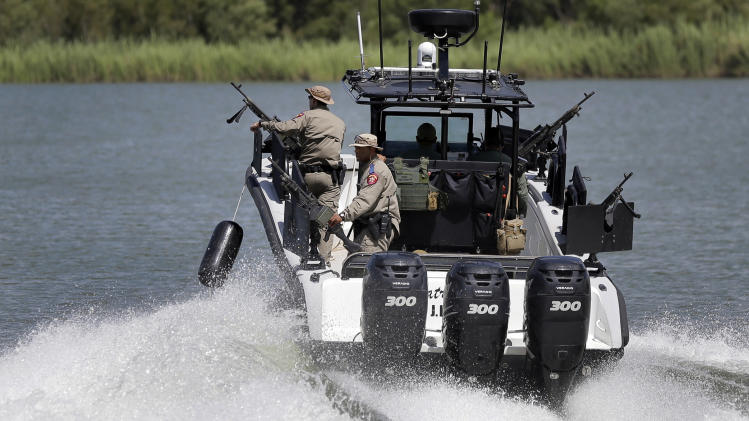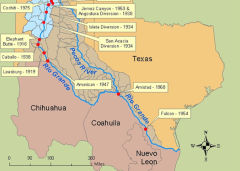 According to The Washington Post, Mexico
owes the U.S. 380,000 acre-feet of water, equivalent to the amount
consumed by 1.5 million Texans over the course of a year.
According to The Washington Post, Mexico
owes the U.S. 380,000 acre-feet of water, equivalent to the amount
consumed by 1.5 million Texans over the course of a year.
Since 1945, The United States
and Mexico have abided by a water utilization treaty, which was put in
place to settle disputes between the neighboring countries over
the allocation of water supplies between the Colorado River and the Rio
Grande. Together the two rivers make up two thirds of a 1,954 mile long U.S.-Mexico border.
Recently, Mexico has been struggling to uphold its end of the
70-year-old deal, which is especially problematic considering Texas is
in the middle of a drought.
What's worse, the race for water in the region doesn't show any signs of stopping. The American Meteorological Society predicts that
the likelihood of a decade-long drought impacting the southwestern
United States this century is at over 90 percent.
 Governor Rick Perry (r) wrote to President Barack Obama in
2013, asking him and Secretary of State John Kerry to use diplomatic
pressure to force Mexico to provide the water. According to the Congressional Research Service, Obama subsequently raised
the issue with President Enrique Peña Nieto during a trip to Mexico
later that year. Nieto stressed his commitment to solving the water
problem as soon as possible.
Governor Rick Perry (r) wrote to President Barack Obama in
2013, asking him and Secretary of State John Kerry to use diplomatic
pressure to force Mexico to provide the water. According to the Congressional Research Service, Obama subsequently raised
the issue with President Enrique Peña Nieto during a trip to Mexico
later that year. Nieto stressed his commitment to solving the water
problem as soon as possible.
During the shortage, Texas has
brought lawsuits against other neighbors as well. Last year, the
U.S. Supreme Court ruled in favor of Oklahoma when a Texas District sued
the state for trying to block the purchase of water reserves from the Red River. The Lone Star State is hoping for better luck in its current suit against New Mexico.
Meanwhile, Ignacio Peña Treviño, a Mexican representative from the International Boundary and Water Commission told The Washington Post that Mexico was struggling to provide the water because of the country's own sustained drought.
"We have had a prolonged drought
since 1994 until now. It has been difficult for Mexico to give this
water,” he said “There isn’t rain like there was in the past.”

No comments:
Post a Comment